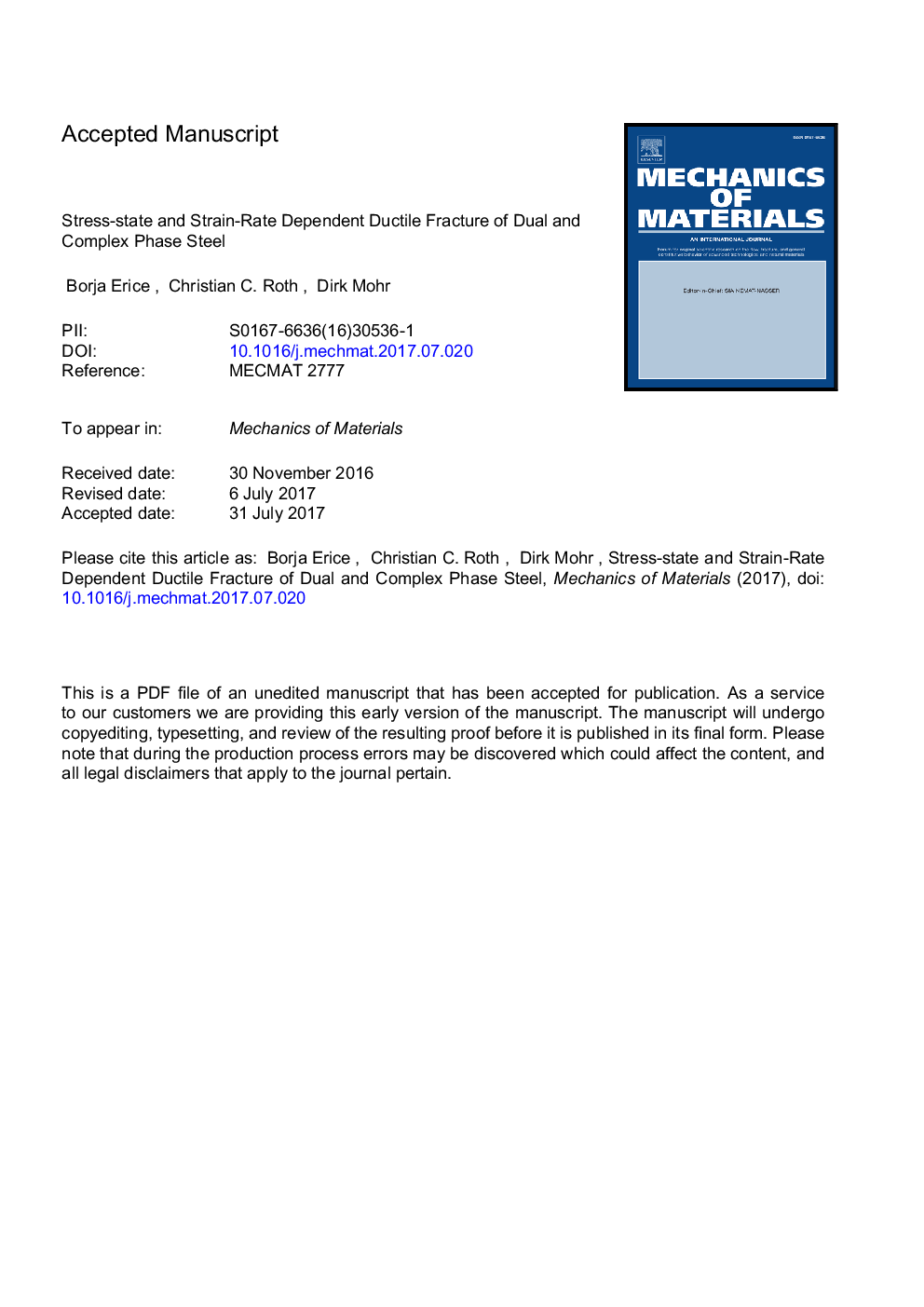| Article ID | Journal | Published Year | Pages | File Type |
|---|---|---|---|---|
| 7178584 | Mechanics of Materials | 2018 | 47 Pages |
Abstract
A comprehensive combined hybrid numerical-experimental program is executed on three advanced high strength steels (DP980, CP980 and CP1180) with the objective of validating (1) the hypothesis of a positive strain rate effect on the ductility under biaxial tension, as well as (2) the Hosford-Coulomb model assumptions with regards to the Lode parameter and stress triaxiality dependency of fracture initiation. The basic low strain rate testing program included punch, notched tension, central hole tension and smiley shear experiments. In addition, intermediate and high strain rate SHPB experiments are carried out to characterize the effect of strain rate. A non-associated quadratic plasticity model with Swift-Voce hardening and Johnson-Cook type of strain rate and temperature dependency is employed to model the large deformation response. The fracture model parameters are identified based on the loading paths to fracture extracted from numerical simulations with fine solid element meshes up to the point of fracture initiation in the experiments. It is found that the simple three-parameter Hosford-Coulomb model can describe the pronounced stress state effect on the strain to fracture for all materials. The results for notched tension also confirm that the ductility increases as function of the loading velocity for biaxial loading.
Related Topics
Physical Sciences and Engineering
Engineering
Mechanical Engineering
Authors
Borja Erice, Christian C. Roth, Dirk Mohr,
